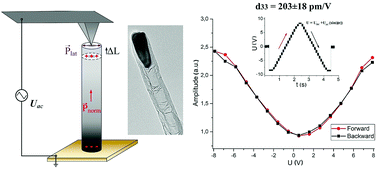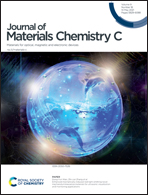Anomalous piezoelectricity and conductivity in aligned carbon nanotubes
Abstract
Aligned carbon nanotubes (CNTs) are among the most promising nanostructures in nanoelectronics. However, at the moment, CNTs have not received wide practical application for producing electronic devices, owing to the fact that electrical parameters of devices based on CNTs seriously deviate from those that were theoretically predicted. Previously, these phenomena were not associated with the properties of CNTs and were attributed to the parasitic effects of the environmental impact, and substrate- and interface-related influences. In this paper, using piezoresponse force microscopy, it is shown for the first time that aligned CNTs with a diameter of 52 ± 9 nm and a length of 1.5 ± 0.27 μm have an abnormally large piezoelectric strain coefficient with a value of 203 ± 18 pm V−1, which exceeds the values of typical piezoelectric nanomaterials. It has been established that piezoelectric properties of aligned CNTs lead to the presence of hysteresis in current–voltage characteristics when sawtooth voltage pulses are applied, and cause a significant decrease in conductivity when rectangular voltage pulses are applied. This effect opens up broad prospects for the use of aligned carbon nanotubes for producing nanopiezotronic devices and makes it possible to explain anomalous effects of resistive switching of the CNTs and electronic devices based on them.



 Please wait while we load your content...
Please wait while we load your content...